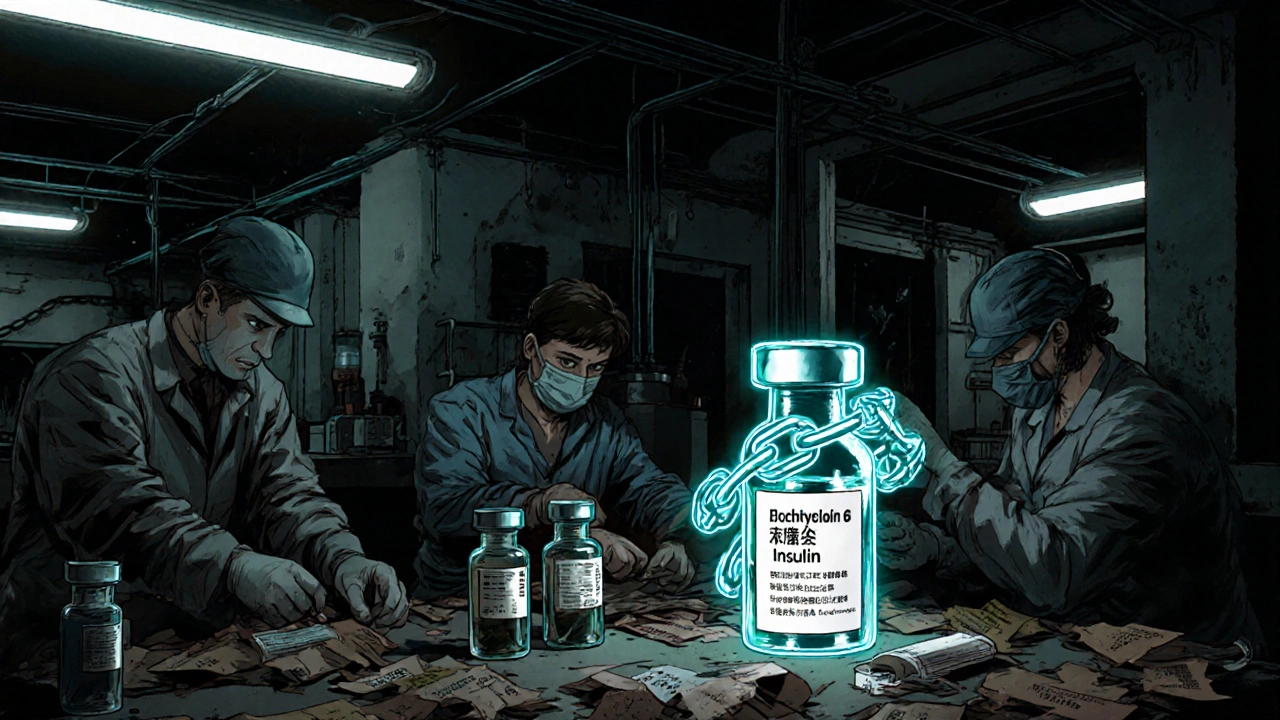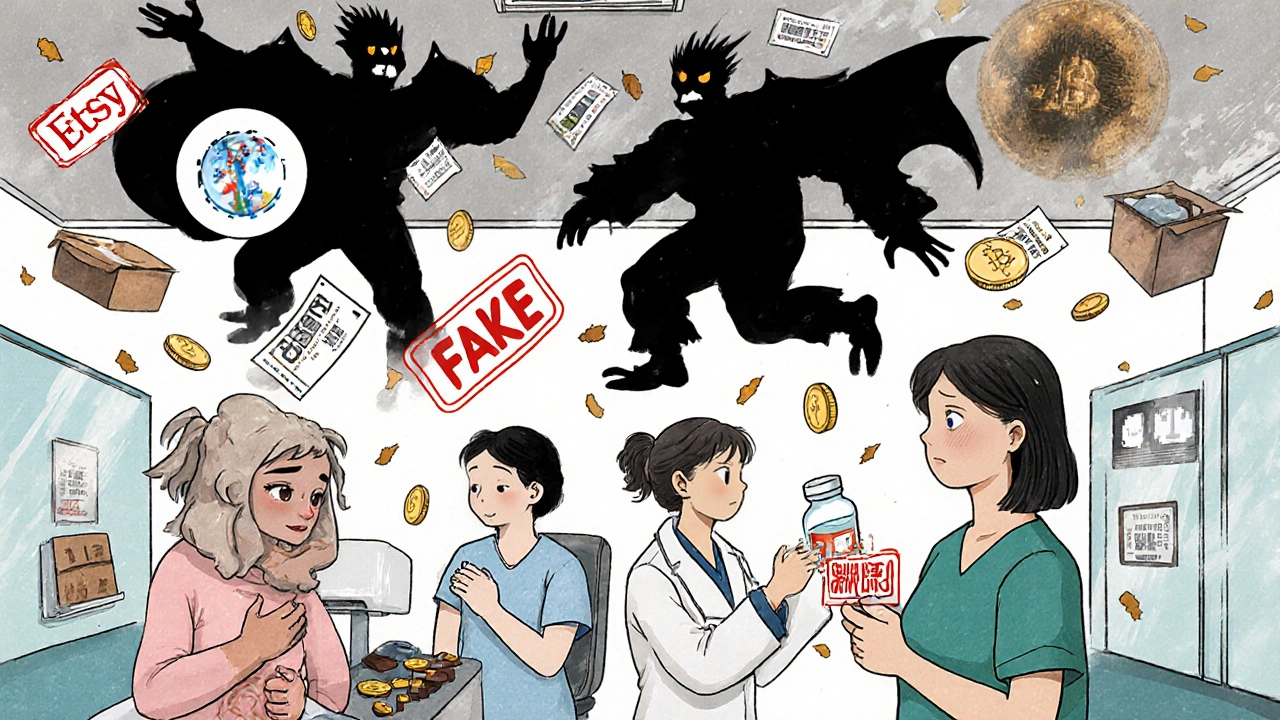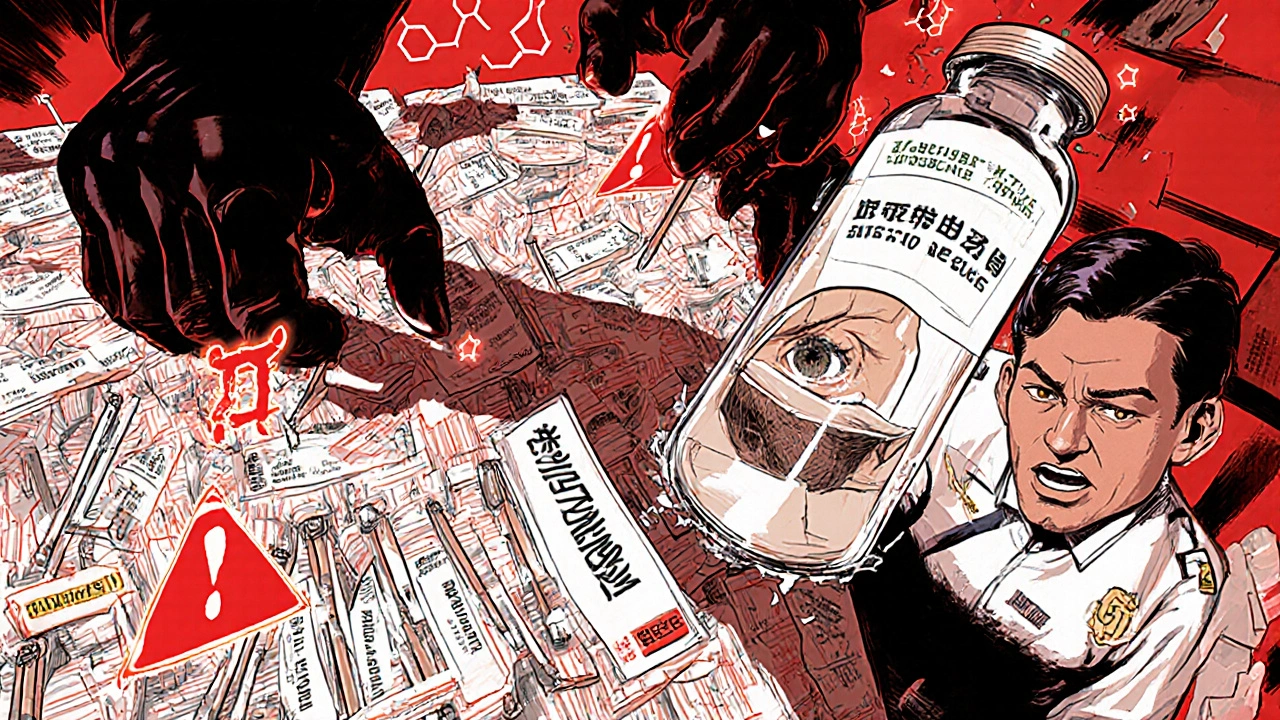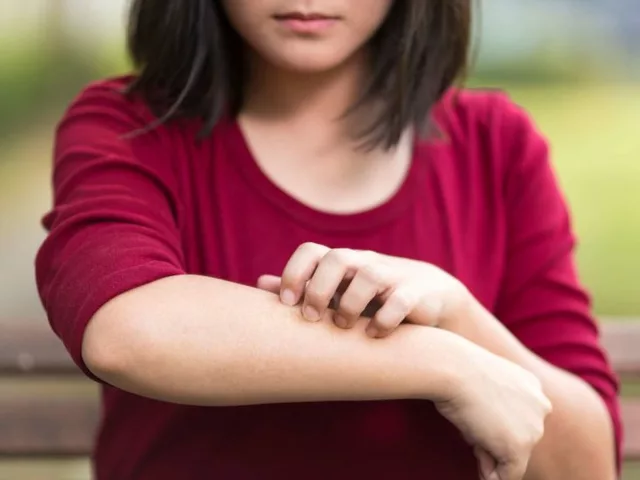Every year, millions of fake pills, injectables, and creams slip through borders, online stores, and pharmacies - disguised as real medicine. Some look identical. Some even come with fake barcodes and sealed packaging. But inside? They might have no active ingredient. Or worse - they’re laced with fentanyl, heavy metals, or industrial chemicals. In 2025, law enforcement seized over 50 million doses of counterfeit medications worldwide. These aren’t just statistics. They’re real people who got sick, ended up in the hospital, or worse.
What Gets Counterfeited - And Why
Counterfeiters don’t target random drugs. They go after high-demand, high-profit products. In 2025, the top targets were:- Weight-loss drugs like Ozempic, Semaglutide, and Tirzepatide
- Erectile dysfunction pills (often fake Viagra or Cialis)
- Botox and dermal fillers sold online for cosmetic use
- HIV medications and insulin - life-saving drugs people can’t afford to lose
Where the Fakes Come From - And How They Get Here
In 2024, U.S. Customs seized over 16,700 counterfeit pre-filled injectable pens. Where did they come from?- 32% from Hong Kong
- 28% from mainland China
- 19% from Colombia
- 11% from South Korea
Real Cases - Real Consequences
In August 2025, a pharmacy in Iowa was fined $25,000 for selling counterfeit Ozempic. The vials looked real. The packaging matched. But lab tests showed no semaglutide at all. One patient reported severe nausea, dizziness, and blood sugar spikes after using it. She didn’t know she’d been poisoned - she thought her diabetes was getting worse. In Cincinnati, CBP officers seized $3.5 million in fake pharmaceuticals in a single day. Among them: counterfeit HIV medications. These weren’t just ineffective. Some contained traces of methamphetamine and industrial solvents. Patients taking these drugs for life-saving treatment were unknowingly injecting toxins. In South Africa, police shut down a warehouse in Gqeberha holding R2.2 million ($118,000) in fake insulin and antibiotics. The labels were in perfect English. The batch numbers looked legit. But the liquid inside was cloudy, with particles floating in it. One hospital reported three patients developing sepsis after using the fake antibiotics. And it’s not just pills. On Reddit, a nurse posted about a patient who developed severe cellulitis after injecting fake dermal fillers bought off Etsy. The packaging was identical to the real product. The needle was sterile. But the liquid? Contaminated with glass shards and bacteria. The patient needed emergency surgery.
How Criminals Are Getting Better - And Harder to Catch
Counterfeiters aren’t using kitchen labs anymore. They’re running organized networks. Some operate out of legitimate-looking factories in China or India. Others use local assembly: shipping empty vials, labels, and caps to small warehouses in the U.S. or Europe, then putting them together just before delivery. This makes tracing the source nearly impossible. They’ve also moved online. In 2025, 47% of counterfeit GLP-1 drugs were sold through Etsy, Amazon, and Facebook Marketplace. Sellers use coded language: "weight management drops," "skin tightening serum," "energy booster." Payment is via cryptocurrency or gift cards. Shipping is disguised as "personal items" or "cosmetic samples." Even pharmacies aren’t immune. A 2025 DOJ case involved 70+ defendants who used fake prescriptions to get Medicaid to pay for $9.5 million in counterfeit drugs - including fake HIV meds. They didn’t need to break into a warehouse. They just needed a printer and a fake ID.What’s Being Done - And What’s Not Working
Interpol’s 2025 Pangea XVI operation was one of the biggest global crackdowns ever. 90 countries participated. 769 arrests. 123 criminal groups dismantled. 13,000 illegal websites shut down. 50.4 million doses seized. But here’s the problem: arrests don’t stop the flow. New websites pop up the next day. New sellers take over. The DEA reported a 24% drop in fake pill seizures in 2024 - not because fewer were being made, but because traffickers shifted to injectables and online sales, which are harder to detect. The biggest gap? Enforcement. U.S. Customs can’t seize drugs that are just unapproved. They have to prove they’re counterfeit. That means waiting for lab tests - which take weeks. Meanwhile, the fake drugs are already in patients’ homes. And while companies like Pfizer have trained law enforcement in 183 countries to spot fake packaging, not every country has the resources to do the same. In Nigeria, NAFDAC shut down a herbal medicine factory making unregulated treatments - but there’s no system to track where those products went after.What You Can Do - And What You Shouldn’t
If you’re buying medication online, here’s what you need to know:- Don’t buy from Etsy, Facebook, or Instagram sellers - even if they have "reviews."
- Never trust a website that doesn’t require a prescription for controlled drugs.
- Check the pharmacy’s license. In the U.S., look for the VIPPS seal (Verified Internet Pharmacy Practice Sites).
- If the price seems too good to be true - it is. Ozempic at $50? That’s a red flag.
- Report suspicious sellers to the FDA’s MedWatch program. Your report could help stop the next shipment.

The Bigger Picture - Why This Matters
Counterfeit drugs aren’t just a crime. They’re a public health emergency. The World Health Organization estimates that 1 in 10 medical products in low- and middle-income countries are fake. In some places, it’s 1 in 3. In 2025, the FDA recorded a 43% jump in adverse event reports tied to suspected counterfeit medications - mostly from weight-loss drugs and cosmetic injectables. These aren’t side effects. These are poisonings. And the trend is worsening. Biologic counterfeiting - fake insulin, cancer drugs, vaccines - rose 12% in 2024. These aren’t pills you can test with a home kit. They’re complex molecules. If the cold chain breaks, or the protein degrades, the drug becomes useless - or toxic. The OECD warns that without global cooperation and better tech, counterfeit drug incidents could rise 15-20% every year. That’s not speculation. That’s projection based on current trends.What’s Working - And What Could Work Better
Some solutions are already proving effective:- Blockchain tracking: Major drugmakers like Roche and Novo Nordisk are using blockchain to track each vial from factory to pharmacy. Pilot programs cut counterfeiting by 37%.
- Serialization: Every package now has a unique code. Scanning it verifies authenticity. But this only works if pharmacies use the scanners - and many don’t.
- Public reporting: The more people report suspicious products, the faster authorities can act. In 2025, over 1,200 reports came in from patients and pharmacists - and 23% led to investigations.
Final Thoughts
Counterfeit medications are not a distant problem. They’re in your neighborhood. In your inbox. On your phone. They’re sold to people who are desperate - for weight loss, for pain relief, for survival. We’ve learned that technology alone won’t stop this. Training alone won’t stop this. Only a combination of smart regulation, global cooperation, public awareness, and real consequences for sellers will make a difference. The next time you see a deal on a weight-loss shot online - don’t click. Don’t buy. Report it. Because someone’s life might depend on it.How can I tell if my medication is counterfeit?
Look for inconsistencies: mismatched fonts on the label, odd color or texture of the pill, packaging that feels flimsy or smells strange. Compare it to photos of the real product on the manufacturer’s website. If you bought it online without a prescription, assume it’s fake until proven otherwise. Always check the pharmacy’s license - in the U.S., use the VIPPS seal.
Are fake drugs only sold online?
No. While most counterfeit drugs now come through online marketplaces, they also enter through compromised pharmacies, smuggled shipments, and even fake clinics. Some counterfeiters sell directly to hospitals or nursing homes using forged documents. Always get your meds from licensed pharmacies - never from street vendors, unverified websites, or social media sellers.
Why don’t customs seize all fake drugs at the border?
U.S. Customs can only seize products that are proven to be counterfeit - meaning they’re mislabeled, altered, or made in an unlicensed facility. They can’t seize a drug just because it’s not FDA-approved. That means many dangerous products slip through if they’re labeled as "dietary supplements" or "research chemicals." This legal gap is a major reason why fake drugs keep getting through.
What should I do if I think I took a fake drug?
Stop taking it immediately. Contact your doctor or go to an emergency room. Tell them you suspect a counterfeit medication. Save the packaging and any receipts. Report it to the FDA’s MedWatch program. Even if you feel fine, the drug could have hidden contaminants that cause damage over time.
Is it safe to buy medications from other countries?
It’s risky. Even if a website claims to be based in Canada or the UK, the drugs may be shipped from China or India. The FDA does not regulate foreign pharmacies. Many so-called "international pharmacies" are fronts for counterfeiters. Only buy from U.S.-licensed pharmacies with VIPPS certification.
Can blockchain technology really stop counterfeit drugs?
Yes - in pilot programs, blockchain tracking reduced counterfeit incidents by 37%. It works by giving each package a unique digital code that’s scanned at every step - from factory to pharmacy. If the code doesn’t match or has been tampered with, the system flags it. But it’s expensive to implement, and not all countries or pharmacies use it yet. It’s a tool, not a cure.






